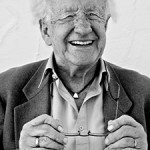Archive for the ‘Japan’ Category
Beholding 2014
By Richard Falk
Written on December 31, 2013
2013 was not a happy year in the chronicles of human history, yet there were a few moves in the directions of peace and justice.
What follows are some notes that respond to the mingling of light and shadows that are flickering on the global stage, with a spotlight placed on the main war zone of the 21st century – the Middle East, recalling that Europe had this negative honor for most of the modern era except for the long 19th century, and that the several killing fields of sub-Saharan Africa are located at the periphery of political vision, and thus their reality remains blurred for distant observers. Read the rest of this entry »
Power scramble in the China seas
By Jonathan Power
In 1978 Deng Xiaoping, architect of China’s economic miracle, said the intractable problems of which country owns what in the East and South China Seas should be left to the next generation. He was right. China should keep kicking that can of worms down the road.
The recent surprise declaration that a huge swathe of international air space above the East China Sea be part of a new Chinese “Air Defence Identification Zone” (ADIZ) is counterproductive. The zone includes the Senaku/Diaoyu islands, claimed by by both China and Japan. The ADIZ demands that any aircraft flying across it must seek permission from China.
What does history say? In 1971 the US post-war occupation regime returned the Senkaku/Diaoyu islands to Japan and China did not object. But, according to Meiji era documents unearthed by Nicholas Kristof of the New York Times, in 1885 Japan acknowledged China as the owner. Read the rest of this entry »
Civilization dialogue as a way of life
By Johan Galtung
Civilization: there are six sources of inspiration today, vying for the attention of a humanity looking for goals and means. Two of them are Western secular, liberal and Marxist, defining to a large extent the USA and the former Soviet Union, but not identical with them. Two of them are Oriental amalgams of civilizations, the Japanese Shinto-Confucian-Buddhist civilization, trying to be Western liberal, and the Chinese Daoist-Confucian-Buddhist civilization with strong elements of Western liberal and Western Marxist. And two of them are in-between: the Islamic and the Buddhist civilizations.[i]
Dialogue: it simply has to happen. Read the rest of this entry »
Abenomics and the State of Japan
By Johan Galtung
From Kyoto, Japan
When Prime Minister Shinzo Abe was forced out of office on September 2007 his focus had been on a strong foreign policy, against the peace Article 9 in the constitution, rewriting history and patriotic education, but not on economic improvement. This time Abe has added strong economics, dubbed abenomics; including the hyper-capitalist TPP, Trans-Pacific Partnership. Not to irritate the US, Abe-LDP (Liberal Democratic Party) sees itself as the guardian of Japan’s security against China and North Korea.
On April 4 the Bank of Japan announced a policy of QE, “quantitative easing” – Orwellian for printing money–doubling the circulating money to 270 trillion yen in two years to turn Japan’s 0.3% deflation to 2% inflation. With so much yen around devaluation follows, making Japan more competitive. With the Bank of Japan buying state bonds, public works could follow, for employment. With both, economic growth.
As a consequence the dollar soared, from 76 yen some years ago to 100; the Nikkei market index soared to above 13,000 for the first time since August 2008, and Abe’s approval rating to 70%. So far so good.
And then, what happens? The hope is to regenerate the golden 1960-70-80s Japan. But both the world and Japan have changed. Read the rest of this entry »
USA-East Asia looking in the abyss
By Johan Galtung
From Kyoto, Japan
It has never been this bad since the 1950-53 Korea war.
October 1962, the Cuba-USSR-USA crisis, comes to mind. There were horror visions of mushroom clouds. A proud Cuba, with a strong leader-dictatorship, a social revolution in the near past, was denied a normal place in the state system, bullied by the USA and some allies with sanctions and boycotts into isolation for now more than 50 years.
Soviet Union shipped nuclear-tipped missiles for deployment as close to USA as the US missiles deployed in Turkey to Soviet Union. And in that was the solution, tit for tat, one nuclear threat for the other, in negotiations kept secret, ultimately revealed by McNamara.
Three countries were involved in 1962; in the current crisis five countries, a pentagon and not two but three nuclear powers:
North Korea < - > China
South Korea < - > Japan < U.S. >
– with the USA-Japan and USA-South Korea alliances pitted against the tacit China-North Korea alliance.
With the unreconciled traumas, of Japan having colonized Korea 1910-45, attacking China and USA during the Pacific War 1931-45; USA using nuclear bombs against Japan 1945; occupying Japan and South Korea; North Korea attacking South Korea; UN-USA counter-attacking, including China (MacArthur), ending in 1953 with an armistice; then 60 years of immensely frustrating quest for unification with the annual USA-South Korea+ Team Spirit exercises close to North Korea.
And, more recently, the USA-China competition for the No. 1 economic world position, the US effort to build economic alliances with the EU and with the Pacific in Trans-Pacific Partnership, and then the Japan-China conflict over the Daiyou-Senkaku islands. To top it: North Korea’s threatening with nuclear weapons, fascist like anybody threatening to turn others into ashes, but so far only verbal violence.
Nonetheless, even against a background like that, there are some ways of defusing this Three against Two pentagon. Read the rest of this entry »
Japan and China’s fight over islands
By Jonathan Power
At last someone has done something sensible in the increasingly bitter fight between Japan and China over the Senkaku/Diaoyu islands – and that is China. China announced at the weekend that it is taking the issue to the UN. China has never done anything like this before.
It can only have been decided at the highest level by the new president himself, Xi Jinping, who in the months before he was promoted leader worked to get the various conflicting parts of the Chinese bureaucracy and the armed forces to pull in the same direction on the issue of maritime disputes. Read the rest of this entry »
Against a third world war – constructively
By Johan Galtung
From Grenzach-Wyhlen, Germany
The probability of a devastating Third World War is not zero, but very far away from 100%. Let us explore why.
The worst case scenario is a world war between the West–NATO, USA, EU with Japan-Taiwan-S. Korea–on the one hand, and the East—SCO (Shanghai Cooperation Organization), Russia, China, Central Asia, with the observers India, Pakistan, Iran. With 4 vs 4 nuclear powers, and West vs Islam as a major theme.
In the center is the explosive mix of a divided territory, and a divided capital, by a wall.
We have been there before: the Cold War, Atlantic and Pacific theaters; 3 vs 2 nuclear powers, and West vs Communism as major theme.
In the center was the explosive mix of a divided Germany, and a divided capital, by a wall; and a divided Korea, by a zone.
And yet no direct, hot war, except by proxies; Korea, Viét Nam. Why? Read the rest of this entry »
U.S. encirclement of China
By Jonathan Power
Not since early Cold War days when the US and NATO effectively
encircled the Soviet Union, feeding Stalin’s paranoia, has America
moved to be so profoundly counterproductive. It is now beginning to
encircle China- at least that is how China is seeing it.
Of course “encircling” is a bit of an exaggerated notion since the
Soviet Union was too large ever to be totally encircled. Likewise
today China is content with the state of affairs on its long Russian,
Mongolian and North Korean borders. But “encircling” does suggest a
process.
Why of all people is President Barack Obama initiating this? We may
not know the answer to that but we do know what he is doing. Read the rest of this entry »
Japan’s spiritual crisis
By Johan Galtung
From Kyoto, Japan: A grey, cold Sunday morning, fitting the sad theme.
The Japan Times, an excellent middle wing newspaper, came in the middle of the night, with four typical stories, for a starter.
We approach the 3/11 anniversary. The earthquake struck on 11 March 2011, followed by the tsunami and the near meltdown of Fukushima No. 1 nuke plant. On 11 March 2004, terrorism struck the Atocha train station in Madrid. A bad date; may inspire somebody.
We read: “Worker at No. 1 nuke plant died from ‘overwork’. He was dispatched by a subcontractor, a construction firm based in Shizuoka, and started working at Fukushima No. 1 on May 13. On his first day he engaged in piping and other work in a waste disposal facility at the complex, but complained of not feeling well the following morning. He was immediately taken to a hospital and died shortly afterwards–radiation still high around Fukushima No. 1–640 km off the coast of Fukushima.” A private construction firm. Read the rest of this entry »


